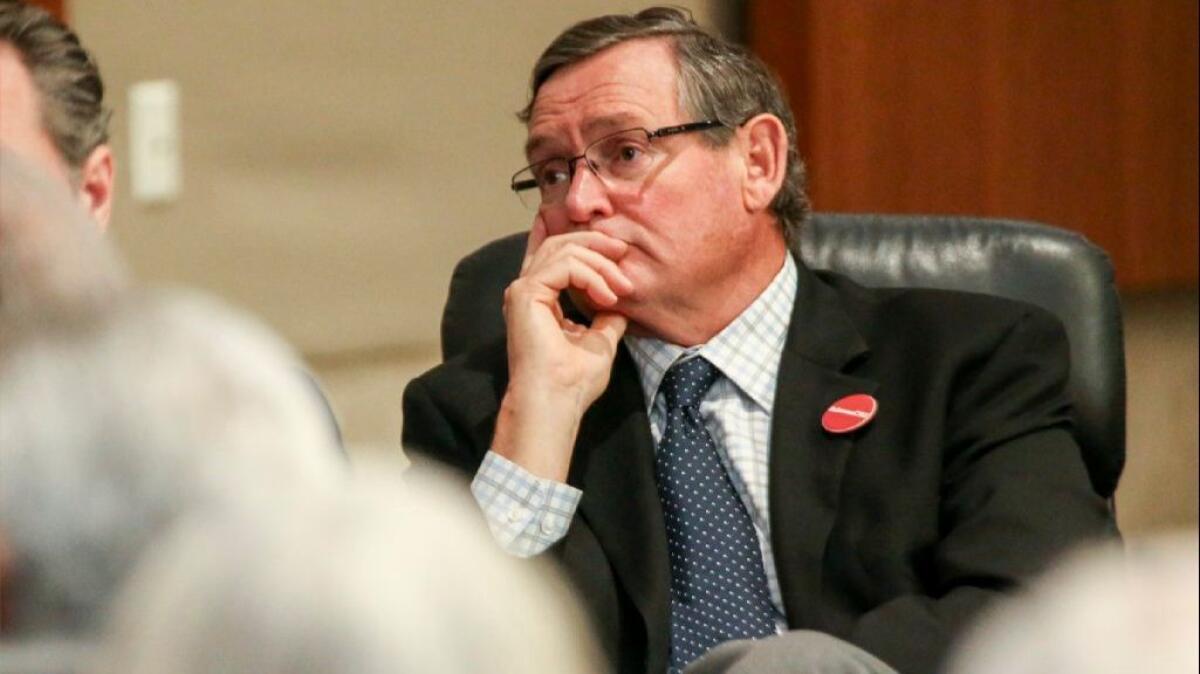Cal State trustees face budget challenges amid efforts to lift graduation rates

About 7,000 more students graduated from Cal State this year than last, and the more than 98,700 earning undergraduate degrees was the highest ever in a single academic year, administrators said.
Cal State has vowed to lift its four-year graduation rate to 40% by 2025. Over the last decade, the rate edged up from about 16% to 20%. Today’s 23% is the highest in Cal State’s history.
Administrators will present these strides to university trustees when they meet in Long Beach starting Tuesday to discuss key issues including budget gaps and rising student fees.
The nation’s largest public university system faces difficult problems with no quick solutions. The state covers a smaller proportion of Cal State’s costs than it used to, and the number of students who want to attend exceeds campuses’ abilities to accommodate them. Student homelessness, campus food pantries and California’s teacher shortage are among the topics on this week’s agenda.
Trustees will also address growing faculty concern over two recent executive orders aimed at helping students graduate sooner. In them, Chancellor Timothy P. White called for major revisions to Cal State’s general education policy, including loosening math requirements, and eliminating non-credit remedial classes by next fall. Faculty across the system’s 23 campuses have acknowledged the need to remove roadblocks that might slow students down, but also have spoken out on how these changes might affect certain departments.
In September, the systemwide Academic Senate passed a resolution calling the orders “hasty” and warning of “rushed and poorly designed implementation” if faculty wasn’t given enough time to weigh in.
Assistant Vice Chancellor Leo Van Cleve, in a recent letter to the Academic Senate, acknowledged that getting the changes in place by next fall might be particularly challenging on certain campuses. “At the same time, we do not want to undercut the work that has already been done or interrupt the progress that has already been made by imposing a delay,” Van Cleve wrote. “We believe there is a very real cost to students if we delay.”
Sonoma State and Cal State Monterey Bay have already received a one-year extension because many of their four-unit courses will need to be re-designed for three. Other campuses have until Nov. 15 to make the case for extensions.
To make the transition easier, administrators say they have allocated about $10 million for faculty training and professional development conferences about designing new courses and restructuring academic preparation.
They say they hope for more state funding to continue their push to get 40% of students to graduate in four years. In a budget memo prepared for the trustees meeting, they said they would use the money “to invest in people, programs, technologies, and strategies that have demonstrated success in improving graduation rates, shortening time-to-degree, and eliminating achievement gaps.”
Based on Gov. Jerry Brown’s current budget plan, administrators expect to get $102 million of the $263 million they say they need in additional state funding — which would bring Cal State’s total annual operating budget to $6.8 billion. They said they would use $75 million of this additional funding to improve graduation rates and $39.9 million to enroll the equivalent of 3,641 additional full-time students.
Cal State is also pushing the state for one-time allocations of $50 million to tackle its backlog of building updates and maintenance, and $25 million for renewable energy and energy efficiency projects.
In their budget request, administrators said that they had found many ways to economize where they could by taking steps such as sharing some library subscriptions and contract services across campuses.
But healthcare, retirement and other mandatory costs continue to increase each year, administrators said, and salary raises for employees are another budget priority. If Cal State doesn’t receive the money it needs from the state, “the university will have to consider other, more difficult options,” such as another tuition increase, the budget memo said.
Both the UC and Cal State systems this year increased tuition for the first time since the 2010-11 academic year, citing financial necessity.
As part of a state transparency law, administrators will meet with the California State Student Assn. this month to begin laying out what another increase might look like.
The University of California also is facing similar budget decisions. This fall, UC officials laid out scenarios for a possible 2.5% tuition increase and 5% hike in the student services fee.
The trustees are scheduled to meet for two days. A live stream of the open sessions can be viewed here.
Follow @RosannaXia for more education news
More to Read
Sign up for Essential California
The most important California stories and recommendations in your inbox every morning.
You may occasionally receive promotional content from the Los Angeles Times.











